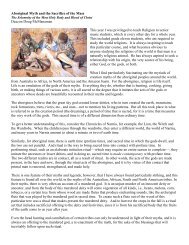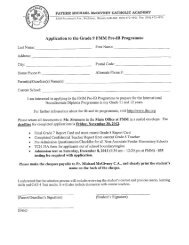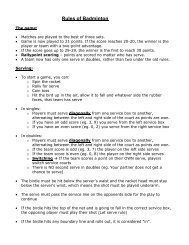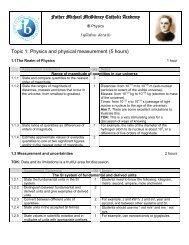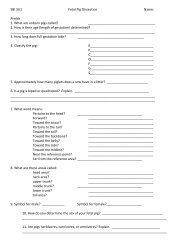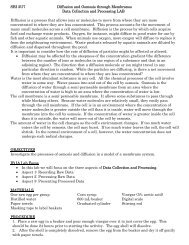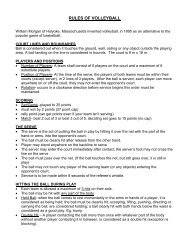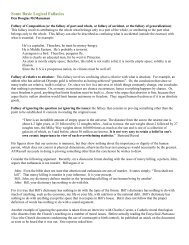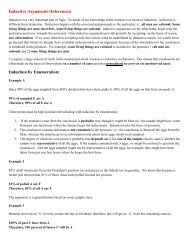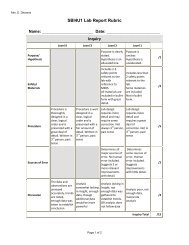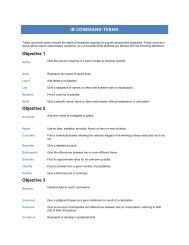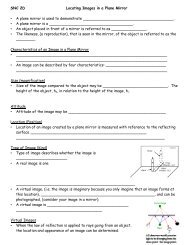Chemistry Review Manual 2
Chemistry Review Manual 2
Chemistry Review Manual 2
You also want an ePaper? Increase the reach of your titles
YUMPU automatically turns print PDFs into web optimized ePapers that Google loves.
Observe how the units cancel out, leaving the desired unit of atoms:<br />
1.648 8 mol × 6.022×10 23 atoms mol −1 = 9.929×10 23 atoms<br />
Dividing the mass of a sample of atoms by the molar mass of the atom gives the amount of the<br />
substance in mol.<br />
mass (in g)<br />
amount (in mol) = Molar mass (in g mol<br />
1 )<br />
m<br />
n = 1.1<br />
−<br />
M<br />
Multiplying by N A then gives the number of atoms. We can use the same formula to count the<br />
number of molecules in a sample.<br />
Example 1.2: How many water molecules are in 20.0 g of water?<br />
Approach: Find number of moles of water. Convert to number of molecules.<br />
mass of water<br />
amount of water (mol) = Molar mass of water<br />
20.0 g<br />
= = 1.11<br />
1 0<br />
mol<br />
18.015 g mol −<br />
This is the amount of water. To answer the question, we must multiply by the Avogadro<br />
constant.<br />
1.11 0 mol × 6.022×10 23 molecules mol -1 = 6.68 ×10 23 molecules<br />
The Avogadro constant has units of “particles” per mole. Here, the particle is a water<br />
molecule. The “particle” can be any unit we need.<br />
1.2 Balancing Chemical Reactions<br />
Chemical reactions are happening all the time. Some are slow, and barely noticeable. Others<br />
are fast. Some of these involve the release of energy in the form of heat, light and/or sound.<br />
Chemical reactions are conversions of one set of compounds – the reactants – into another set of<br />
compounds – the products. They readily occur when there are stable products that can be<br />
reached through some rearrangement of the atoms of the reactants. A principal feature of any<br />
chemical reaction is that the total number of each type of atom, among reactants, must equal the<br />
same tally for the products. Atoms are neither created nor destroyed in a chemical reaction (this<br />
is the Law of Conservation of Mass). This allows us to balance chemical reactions and use the<br />
associated stoichiometric coefficients to determine the expected amounts of the various products.<br />
Example 1.3: Balance the following chemical reactions:<br />
(a) Mg(s) + Cl 2 (g) → MgCl 2 (s)<br />
(b) Ca(s) + O 2 (g) → CaO(s)<br />
(c) CH 4 (g) + O 2 (g) → CO 2 (g) + H 2 O(g)<br />
(a) This chemical equation is already balanced. There are two chlorine atoms and one<br />
magnesium on each side of the equation.<br />
(b) Calcium is already balanced – one Ca on each side. To balance oxygen, we need two<br />
mol of CaO on the right. This changes the calcium balance, which is fixed by having two mol<br />
of Ca on the left. The result is<br />
Page 6 of 88



